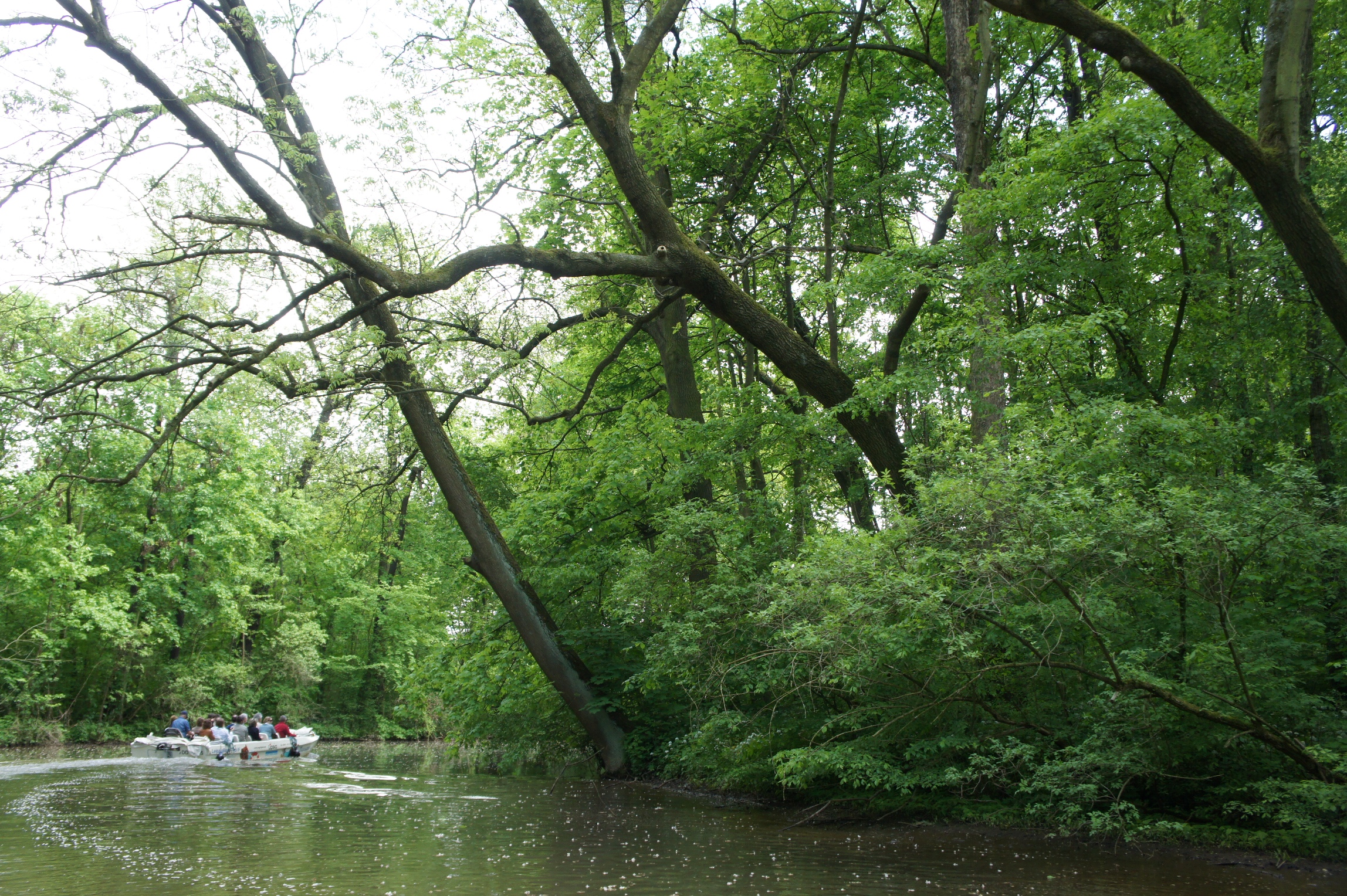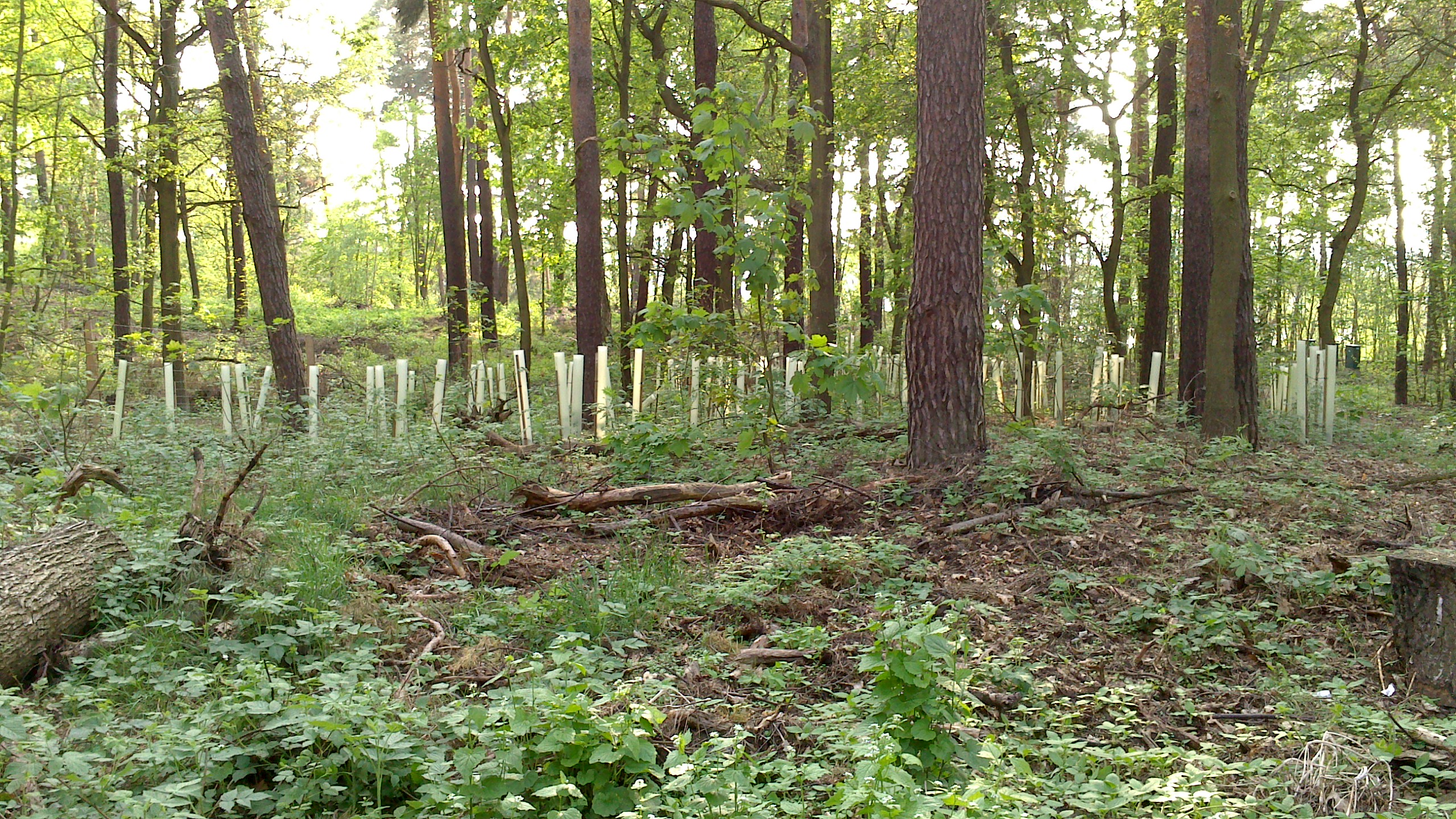Spotlight #29 – Supersites for Superior Forest Science
Supersites for Superior Forest Science
The initiative for establishing Supersites for forest research is only a few years old.
In these supersites, sophisticated, state-of-the-art instruments are used and a multitude of factors in the ecosystem is to be measured to obtain baseline data. As examples: spectrometers will measure how trees absorb and scatter light; laser scanners will map the forest’s three-dimensional structure; soil, plant and atmospheric sciences will be integrated; and mechanistic and policy-oriented modeling will be part of the concept. Read more…
Spotlight #23 – Eucalyptus genome successfully sequenced
Eucalyptus genome successfully sequenced

Professor Zander Myburg of the University of Pretoria, South Africa, in front of Eucalypt trees. Photo by Photowise.
With a result that offers major potential for the forest industry, an international team of researchers has successfully sequenced and analyzed the genome of Eucalyptus grandis.
“Now that we understand which genes determine specific characteristics in these trees, we will be able to breed trees that grow faster, have higher quality wood and use water and land more efficiently,” said the lead investigator on the project, Prof. Zander Myburg of the University of Pretoria, South Africa.
Congress Spotlight #22 – Green cities: The benefits of the urban forest
Green cities: The benefits of the urban forest

Experiencing the floodplain forests of the city of Leipzig, Germany, from the river (photo by Matilda Annerstedt)
The urban forest means different things to different people.
Many of us see only visually pleasing tree-lined streets, or enjoy the coolness afforded by shade trees on hot days.
Those more closely involved with the urban forest see that – and much, much more.
They also see the urban forest in terms of the ecosystem services and values derived from it – reduced energy use of buildings, improved air quality, stream flows, water quality, urban wildlife, human health, climate change (in terms of both mitigation and species composition) and other benefits that are environmental, social and economic.
Congress Spotlight #20 – The climate’s changing: So should forest management
The climate’s changing: So should forest management

In Berlin, the capital city of Germany, a comprehensive program of converting pine stands into close-to-nature mixed forest is being implemented, thus making the forest more resilient to future climate change effects, for example. (Photo by IUFRO)
As a joke, people used to say: “If you don’t like the weather, just wait a minute. It’ll change.”
Now they say that about the climate – but they’re a lot more serious.
The rapidly changing climate will precipitate related changes throughout nature. And that includes the world’s forests.
Anticipating climate change impacts on forests and adapting policies and management strategies to mitigate those impacts is critical to maintain the health of those forests and, by extension, of the earth.
“Forest management for adaptation to climate change” is the theme of a session being presented at the 24th IUFRO World Congress in Salt Lake City this fall, by Drs. Rodney Keenan of the University of Melbourne, Australia; Carina Keskitalo of Umeå University, Sweden; Kalame Fobissie of the World Wildlife Fund Central Africa, Cameroon; and Guangyu Wang of the University of British Columbia, Canada.
Bringing science to the people
How IUFRO’s Special Programme for Development of Capacities (SPDC) contributes to enhancing forest science communication within the framework of a Climate Change Adaptation Program in Bhutan.
Would you like to see your forest be wrapped up in plastic? Well, this is what Bhutanese society will witness due to a research project that aims at simulating drought, which may affect the region’s forests in the future as a result of climate change. In order to inflict drought stress on mature trees, entire research plots of considerable size have been covered with plastic roofs in about 2 m height above ground level, preventing rain water from reaching the soil and roots of trees. But would local people show understanding for such a measure and approve of it easily?
Toss clichés aside and consider gender in ‘landscape’ context — expert says
NOTE: This text is reblogged from the CIFOR blog post at http://blog.cifor.org/20697/toss-cliches-aside-and-consider-gender-in-landscape-context-expert#.Us022ifzzTO
***********************************************************

We need to challenge our own blind spots and put gender research into practice, said Esther Mwangi, a senior scientist with the Forests and Governance Program at the Center for International Forestry Research. CIFOR/Ollivier Girard
WARSAW, Poland (18 December 2013) — Crafting development strategies based on credible research results rather than relying on outdated, unsubstantiated statistics will eliminate gender stereotypes and boost the fight against climate change, a development expert says.
Steering sustainable development polices toward a “landscapes approach” framework, which applies an integrated approach to land management, will make the relevance of gender to environmental debates even more apparent, said Seema Arora-Jonsson, associate professor of rural development with the University of Agricultural Sciences in Uppsala, Sweden.
Governance and Legal Frameworks for Sustainable Landscapes – GLF Discussion Forum, 17th November
1. How can landscape approaches contribute to the UNFCCC process?
Landscape approaches require governance and legal frameworks to cross levels and sectors, informed by the best possible science of the problem. A policy learning architecture is needed to assess how interests and imperatives are prioritized and how collaborative solutions can be found.
2. How can landscape approaches contribute to the design of Sustainable Development Goals and their achievement?
Food production without forest destruction – is it possible?
Is there a chance of providing enough food for 9 billion people on earth and at the same time ensuring that natural resources such as forests, soil and water are not depleted or destroyed and climate change impacts are not aggravated? This is the main question that the Global Landscape Forum will address in the coming two days in between the first and the second week of the COP19 climate negotiations in Warsaw.
 One day ahead of the GLF, a distinguished panel shared their thoughts on the Global Landscape Forum’s goals and importance to international climate discussions and negotiations at a press briefing.
One day ahead of the GLF, a distinguished panel shared their thoughts on the Global Landscape Forum’s goals and importance to international climate discussions and negotiations at a press briefing.
Afforestation of Subtropical Grasslands for Climate Change Mitigation
All year round, IUFRO (www.iufro.org) scientists hold or participate in meetings to present results and exchange knowledge in all fields of research related to forests. Quite recently, only a short time before the Global Landscapes Forum in mid-November on the sidelines of the Warsaw Climate Change Conference, IUFRO scientists were again discussing issues of great relevance to this upcoming event, namely at the:
1st International Symposium on Afforestation of Pastures in Subtropical Regions
Spotlight #15 – Planted forests’ roles: Different strokes for different oaks
Planted forests’ roles: Different strokes for different oaks
Planted forests are vital but vulnerable resources that can contribute in a sustainable fashion to some of humanity’s most pressing needs – poverty alleviation, food security, renewable energy, mitigation of and adaptation to climate change, and biodiversity conservation – as well as the preservation of natural forests.
These are among the findings in the recently published Summary Report of the 3rd International Congress on Planted Forests. It is based on outcomes from three scientific workshops and a plenary meeting that took place earlier this year.
Thirty-three countries have greater than 1 million hectares of planted forest area. Together these countries comprise 90% of the world’s 264 million hectares of planted forest which, in turn, equals almost 7% of the total global forest area. The report takes into account key research findings from Africa, Asia, Europe, Oceania, Latin America and North America related to vulnerability, viability and governance of planted forests.



